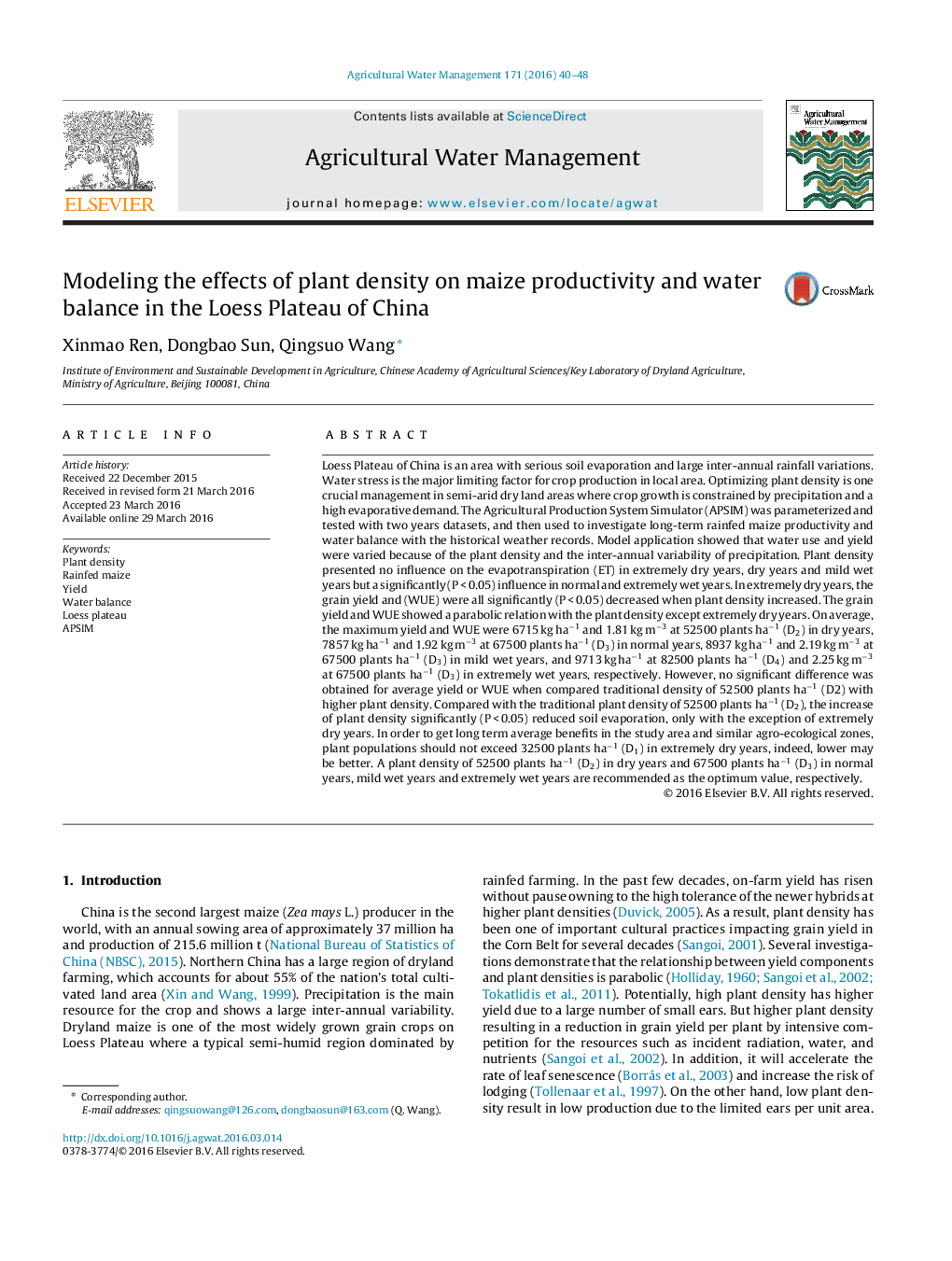| کد مقاله | کد نشریه | سال انتشار | مقاله انگلیسی | نسخه تمام متن |
|---|---|---|---|---|
| 6363477 | 1622909 | 2016 | 9 صفحه PDF | دانلود رایگان |
- Modelling was used to quantify yield of rainfed maize and water balance on the Loess Plateau.
- Plant density presented no significant (PÂ >Â 0.05) influence on the evapotranspiration in dry years and mild wet years, but a significant (PÂ <Â 0.05) positive influence in normal and extremely wet years.
- Soil evaporation was reduced significantly (PÂ <Â 0.05) by increased plant density, only with the exception of extremely dry years.
- Plant density of 32500 and 52500 plants haâ1 are recommended in extremely dry years and dry years, respectively. In normal years, mild wet years and extremely wet years, 67500 plants haâ1 is recommended as the optimum value in order to get long-term benefit.
Loess Plateau of China is an area with serious soil evaporation and large inter-annual rainfall variations. Water stress is the major limiting factor for crop production in local area. Optimizing plant density is one crucial management in semi-arid dry land areas where crop growth is constrained by precipitation and a high evaporative demand. The Agricultural Production System Simulator (APSIM) was parameterized and tested with two years datasets, and then used to investigate long-term rainfed maize productivity and water balance with the historical weather records. Model application showed that water use and yield were varied because of the plant density and the inter-annual variability of precipitation. Plant density presented no influence on the evapotranspiration (ET) in extremely dry years, dry years and mild wet years but a significantly (P < 0.05) influence in normal and extremely wet years. In extremely dry years, the grain yield and (WUE) were all significantly (P < 0.05) decreased when plant density increased. The grain yield and WUE showed a parabolic relation with the plant density except extremely dry years. On average, the maximum yield and WUE were 6715 kg haâ1 and 1.81 kg mâ3 at 52500 plants haâ1 (D2) in dry years, 7857 kg haâ1 and 1.92 kg mâ3 at 67500 plants haâ1 (D3) in normal years, 8937 kg haâ1 and 2.19 kg mâ3 at 67500 plants haâ1 (D3) in mild wet yearsï¼and 9713 kg haâ1 at 82500 plants haâ1 (D4) and 2.25 kg mâ3 at 67500 plants haâ1 (D3) in extremely wet years, respectively. However, no significant difference was obtained for average yield or WUE when compared traditional density of 52500 plants haâ1 (D2) with higher plant density. Compared with the traditional plant density of 52500 plants haâ1 (D2), the increase of plant density significantly (P < 0.05) reduced soil evaporation, only with the exception of extremely dry years. In order to get long term average benefits in the study area and similar agro-ecological zones, plant populations should not exceed 32500 plants haâ1 (D1) in extremely dry years, indeed, lower may be better. A plant density of 52500 plants haâ1 (D2) in dry years and 67500 plants haâ1 (D3) in normal years, mild wet years and extremely wet years are recommended as the optimum value, respectively.
Journal: Agricultural Water Management - Volume 171, June 2016, Pages 40-48
